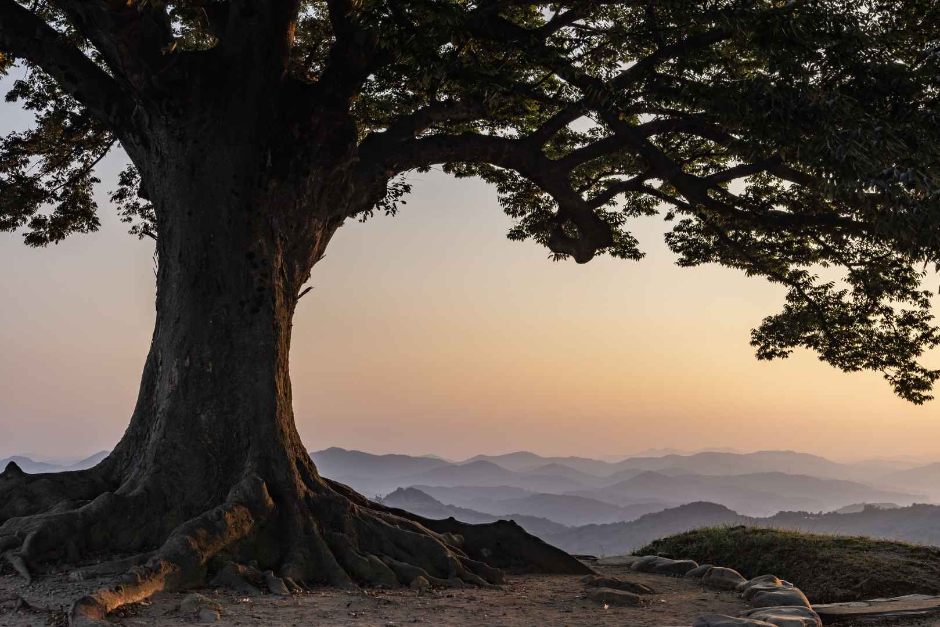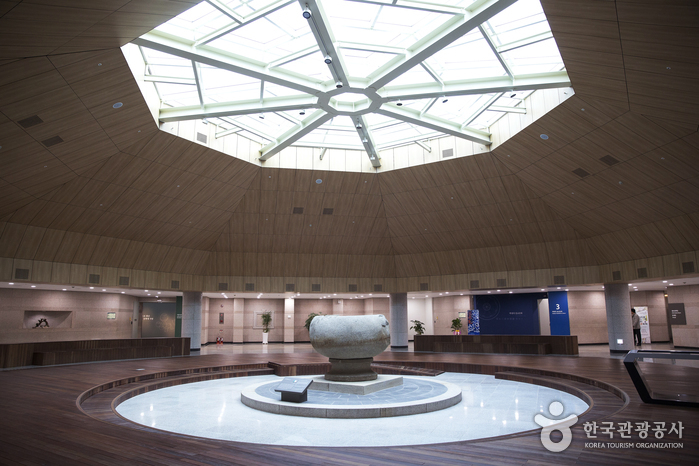Buyeo Naseong Fortress [UNESCO World Heritage] (부여 나성 [유네스코 세계문화유산])
17.2Km 2021-07-22
100-11, Dongmun-ro142beon-gil, Buyeo-gun, Chungcheongnam-do
+82-41-830-2623
Buyeo Naseong, also known as the Outer City Wall, was built to protect the capital of Baekje, Sabi. It has a x_height of about 8.4 kilometers. The wall surrouned Busosanseong Fortress and extended to the city of Buyeo.
The wall is one of the oldest walls along with Naseong in Pyeongyang and it is estimated to have been built around 538, when the Baekje capital was changed from Woonjin (current Gongju) to Sabi (current Buyeo). The wall of the fortress starts from the site where Dongmun (East gate) was located to the area of Geumgang River, made by piling soil up. However, only a few traces remain of its former glory.
For now, it leaves a blurry trail including a 20 meter area to the east of Cheongsanseong Fortress, Dongmun Bridge from Seokmok-ri, and an area from Pilseobong Peak to Yeomchang-ri. While the outer wall is sharply sloped, the inner wall was built with a gentle slope to make it easier for horses to reach the guard posts on the top of the wall. Inside the fortress, the palace of Baekje, government offices, houses, temples, stores and protected facilities can be seen. The entire structure of Naseong Fortress features Geumgang River in the south and west sides, providing a natural double-defense system. The wall was one of the important outer defense facilities along with Cheongsanseong and Cheongmasanseong Fortresses.
* Area: 554,591 ㎡
Surakgyegok Valley (수락계곡)
17.7Km 2024-02-21
116 Surak-ri, Beolgok-myeon, Nonsan-si, Chungcheongnam-do
Surakgyegok Valley is a valley located in the northern part of Daedunsan Provincial Park. Enveloped by forests and flowing streams, it offers opportunities for forest bathing, and its moderate temperatures even in the summer make it suitable for leisure activities. Throughout the valley, visitors can find waterfalls such as Surakpokpo Falls and Seonnyeopokpo Falls. A notable feature of this area is the steep iron staircase nestled between cliffs, leading from the valley to the summit of Daedunsan Mountain, which is a highlight of the area.
Daedunsan Provincial Park (Nonsan Section) (대둔산도립공원 (논산))
17.7Km 2024-07-09
Surakgyegok-gil, Nonsan-si, Chungcheongnam-do
+82-41-746-6156
Daedunsan Mountain offers spectacular views and various scenic spots like Gunjigyegok Valley, Surakpokpo Falls, Macheondae Seonnyeopokpo Falls, Nakjodae Peak, Surakgyegok Valley, and more. In particular, the one-kilometer-high cliff and the unique rock formations at Surakpokpo Falls provide great scenery.
Surakpokpo Falls and Gunjigyegok Valley are at the entrance of the hiking trail that leads up to Daedunsan Mountain. It is about a two-hour hike from Surakgyegok Valley to Macheondae Peak on Daedunsan Mountain.
Dasom Chaban (다솜차반)
18.2Km 2024-02-13
29 Gyebaek-ro 421beon-gil, Yuseong-gu, Daejeon
Dasom Chaban is a Korean table d'hote restaurant celebrated for its picturesque garden setting. The restaurant presents a range of meticulously crafted full-course meals, distinguished by their tidy presentation and ample portions. The standout dish is the geongang borigulbi jeongsik (barley-aged dried yellow croaker set menu), featuring an appetizer, assorted side dishes, and over ten different delicacies, with bori gulbi as the main course. Nestled on the outskirts of Daejeon, it offers an ideal retreat for a leisurely drive and a delightful dining experience.
Buyeo Garimseong Fortress (부여 가림성)
19.0Km 2025-10-23
167 Seongheung-ro 97beon-gil, Imcheon-myeon, Buyeo-gun, Chungcheongnam-do
+82-41-830-2880
Garimseong Fortress is a stone fortress built on the lower reaches of the Geumgang River to protect Sabiseong Fortress, the capital of the Baekje dynasty. The fortress' parking lot is only 200 meters away from the southern entrance, allowing visitors to easily access and enjoy the view from this historical fortress. By ascending the stairway by the rocky cliff, a large tree comes into view. Known to be over 400 years old, this tree is called the "Love tree of Seongheungsan Mountain" and has even made an appearance in the drama "Seodongyo (200)." The fortress is also popular as a sunrise spot, serving as Buyeo-gun’s New Year's Eve festival venue.
◎ Travel information to meet Hallyu’s charm - TV series "Hotel Del Luna"
From Man-wol’s friendship with Yeon-woo to her anger toward Chung-myung in “Hotel Del Luna,” Buyeo Garimseong Fortress has become a popular social media hotspot. Offering a panoramic view of Buyeo’s cityscape, the fortress became a new social media hotspot as it offers a unique photo opportunity under a zelkova tree called the “love tree.”
Buyeo National Museum (국립부여박물관)
19.9Km 2021-08-13
5, Geumseong-ro, Buyeo-gun, Chungcheongnam-do
+82-41-833-8562
Buyeo National Museum was first established by the Buyeo Preservation Society in 1929 as a collection of relics and artifacts related to the Baekje kingdom. This collection was on display at a government building from the Joseon dynasty until 1970, when a new building was erected on the southern foothills of Busosan Mountain. It moved again on August 6, 1993 to the current location. The museum has four exhibition halls and an outdoor exhibit with a total of about 1,000 relics on display.
![Buyeo Naseong Fortress [UNESCO World Heritage] (부여 나성 [유네스코 세계문화유산])](http://tong.visitkorea.or.kr/cms/resource/71/2725771_image2_1.jpg)



 English
English
 한국어
한국어 日本語
日本語 中文(简体)
中文(简体) Deutsch
Deutsch Français
Français Español
Español Русский
Русский